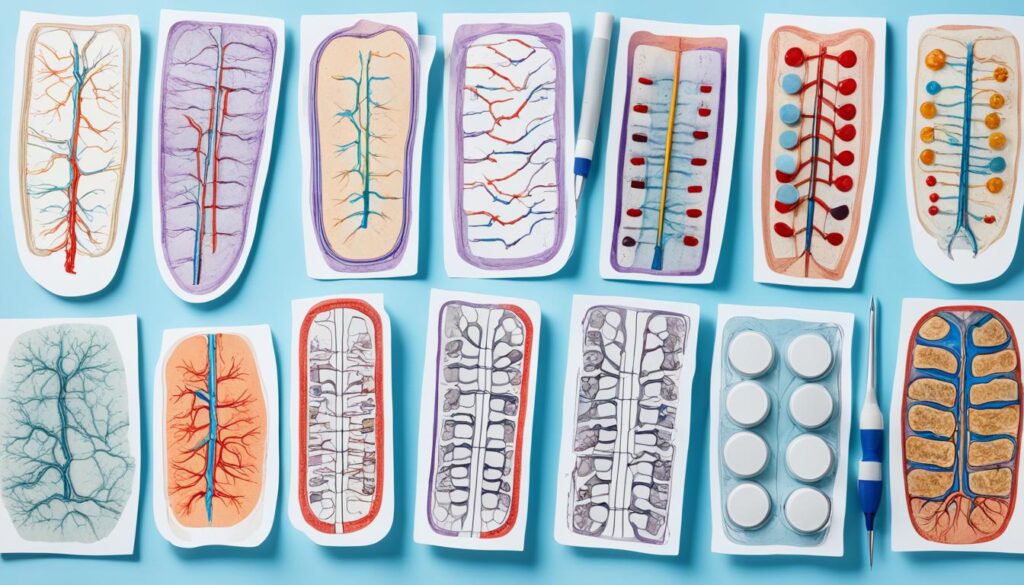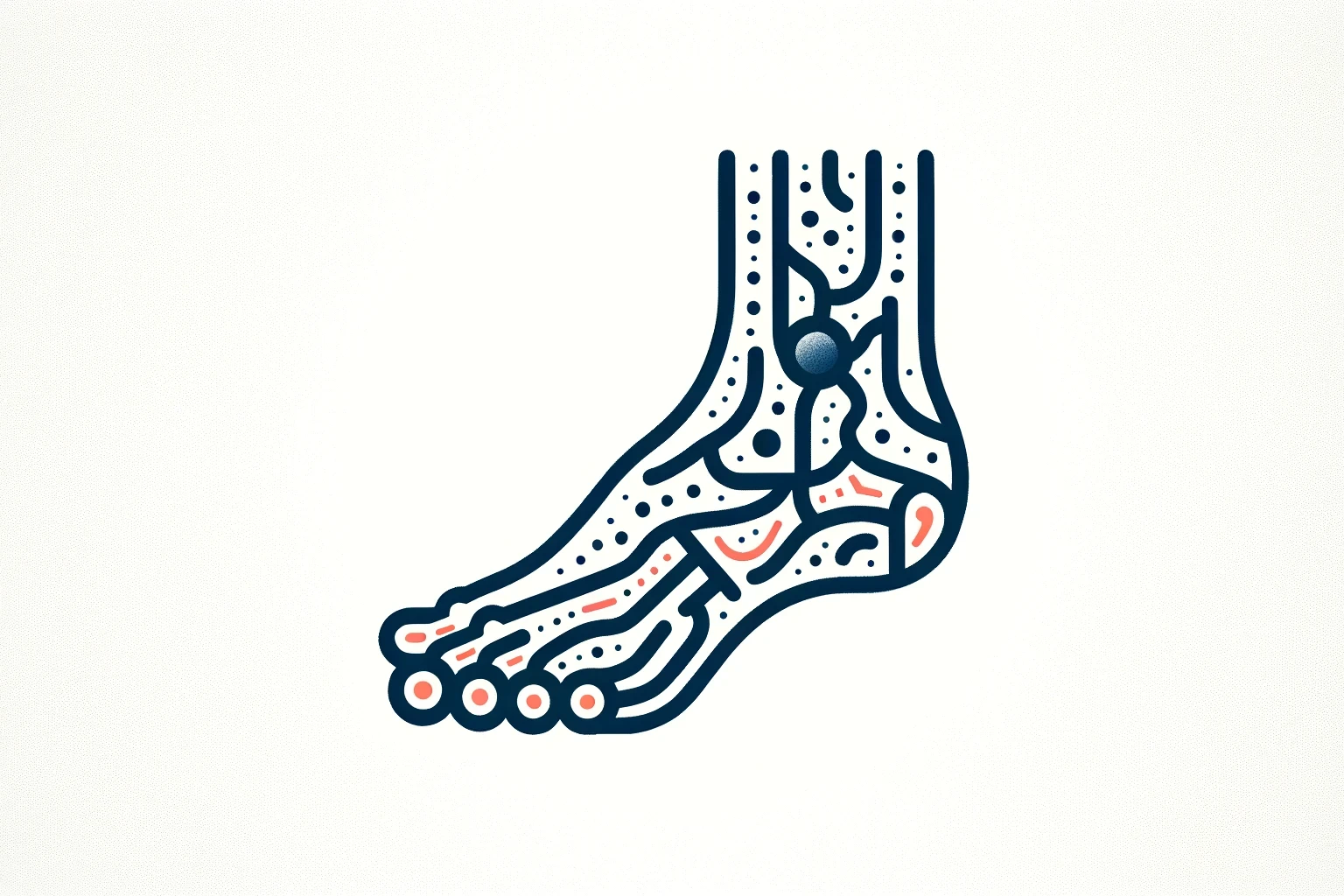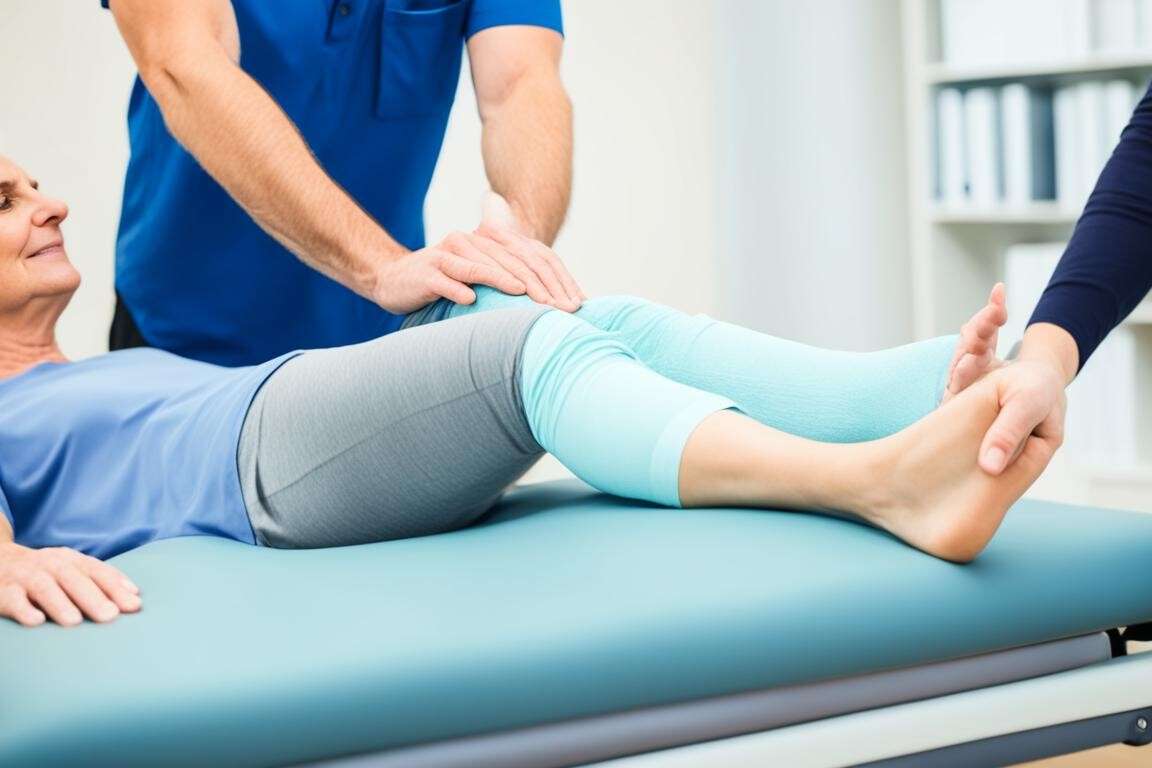Welcome to our comprehensive guide on the diagnosis of Charcot Marie Tooth disease (CMT). If you or a loved one is experiencing symptoms such as muscle weakness, sensory loss, or foot deformities, it is important to understand the diagnostic process to effectively manage this neurological disorder. In this guide, we will walk you through the steps involved in diagnosing CMT, including a thorough physical examination and various tests. By understanding the diagnostic process, you can gain valuable insights into your condition and take control of your health.
Charcot Marie Tooth disease is a condition that affects the peripheral nerves, causing muscle weakness and atrophy. It is often characterized by symptoms such as muscle weakness in the arms, legs, hands, and feet, reduced muscle bulk in the lower legs, sensory loss in the feet and hands, and foot deformities. These symptoms indicate nerve damage, which can be further explored through diagnostic tests.
Throughout this guide, we will cover the signs and symptoms of CMT, diagnostic tests commonly used for diagnosis, available treatment options, potential future treatments being researched, and self-care tips to manage your condition. By the end of this guide, you will have a comprehensive understanding of Charcot Marie Tooth disease diagnosis and be better equipped to navigate your healthcare journey.
Let’s dive into the details and explore the world of Charcot Marie Tooth disease diagnosis together!
Table of Contents
ToggleSigns and Symptoms of Charcot Marie Tooth Disease
Charcot Marie Tooth disease is characterized by a variety of symptoms that can affect different parts of your body. Recognizing these signs and symptoms is crucial in the diagnosis of CMT.
- Muscle Weakness: One of the most common symptoms of CMT is muscle weakness. This weakness can occur in the arms, legs, hands, and feet, making it difficult to perform everyday tasks.
- Decreased Muscle Bulk: Another indicator of CMT is a decrease in muscle bulk, particularly in the lower legs. This can result in muscle wasting and a thinning appearance.
- Reduced Reflexes: CMT can also lead to reduced reflexes, making it challenging for your body to respond to stimuli in a timely manner.
- Sensory Loss: Nerve damage caused by CMT can result in sensory loss, particularly in the feet and hands. This can cause a loss of feeling or numbness, making it difficult to detect changes in temperature, pressure, or pain.
- Foot Deformities: Many individuals with CMT experience foot deformities such as high arches or hammertoes. These deformities can affect your balance, stability, and overall mobility.
- Orthopedic Problems: In addition to muscle weakness and foot deformities, CMT can also lead to other orthopedic issues, including scoliosis and joint pain.
These symptoms are the result of nerve damage and can vary in severity from person to person. If you experience any of these signs and suspect you may have CMT, it is important to consult with a healthcare professional for an accurate diagnosis and appropriate treatment.
Diagnostic Tests for Charcot Marie Tooth Disease
The diagnostic process for Charcot Marie Tooth disease involves a series of tests that help healthcare professionals confirm the diagnosis and identify specific genetic defects. These tests include:
- Nerve Conduction Studies: Nerve conduction studies measure the strength and speed of electrical signals transmitted through the nerves. By applying small electrical pulses to specific nerves and recording their response, doctors can evaluate the efficiency of nerve transmission and identify any abnormalities.
- Electromyography: Electromyography involves inserting a needle electrode into the muscle to measure its electrical activity. This test helps identify abnormal nerve-to-muscle signal transmission and can determine if muscle weakness is the result of nerve damage.
- Nerve Biopsy: In some cases, a nerve biopsy may be performed to examine a small sample of nerve tissue under a microscope. This can help to confirm the presence of Charcot Marie Tooth disease and rule out other potential causes of symptoms.
- Genetic Testing: Genetic testing plays a critical role in the diagnosis of Charcot Marie Tooth disease. It involves analyzing a blood or saliva sample to identify specific genetic mutations associated with the condition. This testing can help determine the specific subtype of CMT and provide valuable information for treatment and future planning.
These diagnostic tests play an integral role in confirming the presence of Charcot Marie Tooth disease and determining the appropriate course of treatment. They provide valuable insights into the functioning of nerves and muscles, allowing healthcare professionals to better understand the underlying causes of symptoms.

| Diagnostic Test | Description |
|---|---|
| Nerve Conduction Studies | Measures the strength and speed of electrical signals transmitted through the nerves. |
| Electromyography | Involves inserting a needle electrode into the muscle to measure its electrical activity. |
| Nerve Biopsy | Examines a small sample of nerve tissue under a microscope to confirm the presence of CMT. |
| Genetic Testing | Identifies specific genetic mutations associated with CMT through blood or saliva analysis. |
Treatment Options for Charcot Marie Tooth Disease
Although Charcot Marie Tooth disease has no known cure, there are several treatment options available to help manage its symptoms. Each treatment approach aims to alleviate pain, improve mobility, and enhance overall quality of life for individuals with CMT.
Medications for Pain Relief
One of the treatment options for Charcot Marie Tooth disease involves the use of medications to alleviate pain and muscle cramps. Nonsteroidal anti-inflammatory drugs (NSAIDs) like ibuprofen and naproxen can help reduce pain and inflammation. In some cases, doctors may prescribe muscle relaxants to relieve muscle spasms and cramps.
Physical Therapy for Muscle Strengthening
Physical therapy plays a vital role in managing Charcot Marie Tooth disease. Through targeted exercises and stretching routines under the guidance of a physical therapist, individuals with CMT can strengthen their muscles and improve overall mobility. These exercises focus on maintaining flexibility, enhancing muscle coordination, and preventing muscle tightening and loss.
Occupational Therapy for Hand Weakness
Occupational therapy can greatly benefit individuals with Charcot Marie Tooth disease who experience hand weakness and fine motor difficulties. By engaging in specialized exercises and activities, occupational therapists can help improve hand strength and coordination, which in turn enhances fine motor skills and daily functional tasks.
Orthopedic Devices for Improved Mobility
In addition to medication and therapy, orthopedic devices such as braces, splints, and orthotic shoe inserts may be recommended for individuals with Charcot Marie Tooth disease. These devices provide support, stability, and correction for foot deformities, enabling improved mobility and reducing the risk of falls and injuries.
| Treatment Option | Description |
|---|---|
| Medications | Prescribed to alleviate pain and muscle cramps |
| Physical Therapy | Exercises and stretches to strengthen muscles and prevent muscle tightening and loss |
| Occupational Therapy | Specialized activities to improve hand strength and fine motor skills |
| Orthopedic Devices | Braces, splints, and orthotic shoe inserts for improved mobility |
Potential Future Treatments for Charcot Marie Tooth Disease
Researchers are actively studying potential future treatments for Charcot Marie Tooth disease. These may include medications, gene therapy, and in vitro procedures aimed at preventing the disease from being passed on to future generations. These advancements may offer hope for improved treatment and management of CMT in the future.
Gene therapy is a promising area of research for the treatment of Charcot Marie Tooth disease. It involves introducing healthy genes into the affected cells to compensate for the genetic defects causing the disease. By targeting the specific genes responsible for CMT, gene therapy aims to correct the underlying genetic abnormalities and potentially halt or slow down the progression of the disease.
In vitro procedures, also known as assisted reproductive technologies, are being explored as a potential solution for individuals with Charcot Marie Tooth disease who wish to have children without passing the condition on to future generations. These procedures involve the manipulation of eggs and sperm in a laboratory to screen for and select embryos free from the genetic mutations associated with CMT. By selectively choosing unaffected embryos for implantation, in vitro procedures offer the possibility of preventing the transmission of CMT to future offspring.
While these future treatments for Charcot Marie Tooth disease are still in the research and development stage, they hold promise for the future management and prevention of CMT. Continued advancements in gene therapy and in vitro procedures may provide new options for individuals living with CMT and their families.
Self-Care Tips for Charcot Marie Tooth Disease
Individuals with Charcot Marie Tooth disease can take proactive measures to manage their symptoms and reduce the risk of complications through self-care. By incorporating simple at-home activities and adopting healthy habits, you can effectively maintain your overall well-being and improve your quality of life.
Maintain Flexibility, Strength, and Balance
Regular stretching and exercise are crucial for individuals with Charcot Marie Tooth disease to maintain flexibility, enhance muscular strength, and improve balance. Engage in low-impact activities that can be easily incorporated into your daily routine, such as yoga, walking, or swimming. Consult with a healthcare professional or physical therapist to develop a personalized exercise plan tailored to your abilities and needs.
Pay Attention to Foot Care
Foot care is of utmost importance for individuals with Charcot Marie Tooth disease. Proper foot hygiene and ongoing care can help prevent foot deformities, minimize the risk of infections, ulcers, and ensure optimal foot health. Regularly inspect your feet for any abnormalities, wounds, or sores. Cleanse and moisturize your feet daily, and wear comfortable, well-fitting shoes with appropriate arch support to reduce the strain on your feet.
Enhance Stability with Assistive Devices
Using assistive devices such as canes or walkers can significantly improve stability and reduce the risk of falls for individuals with Charcot Marie Tooth disease. Seek guidance from a healthcare professional or physical therapist to determine which assistive device suits your specific needs. They can provide valuable recommendations and demonstrate proper usage techniques to ensure your safety and stability.
Ensure Adequate Lighting
Good lighting plays a vital role in preventing falls and enhancing safety for individuals with Charcot Marie Tooth disease. Ensure that your living space is properly illuminated, especially in areas prone to potential hazards. Use brighter light bulbs, install nightlights in hallways and bathrooms, and remove any obstacles or clutter that may increase the risk of tripping or falling.

| Self-Care Tips for Charcot Marie Tooth Disease |
|---|
| Regular stretching and exercise |
| Proper foot care |
| Use of assistive devices |
| Ensure adequate lighting |
Conclusion
Managing Charcot Marie Tooth (CMT) disease begins with understanding the diagnostic process. By recognizing the signs and symptoms, individuals with CMT can take control of their condition and improve their quality of life.
CMT is a neurological disorder that affects the peripheral nerves, resulting in muscle weakness and atrophy. Through thorough physical examinations and various diagnostic tests like nerve conduction studies, electromyography, nerve biopsy, and genetic testing, healthcare professionals can accurately diagnose CMT.
Once diagnosed, treatment options such as medications, physical therapy, occupational therapy, and orthopedic devices can help manage the symptoms of CMT. Additionally, self-care practices like regular stretching and exercise, proper foot care, and the use of assistive devices can also contribute to improved stability and prevent complications.
The ongoing research in potential future treatments, including gene therapy and in vitro procedures, provides hope for advancements in the management of CMT. With further advancements, individuals with CMT can look forward to more effective treatment options in the future.
FAQ
What is Charcot Marie Tooth disease?
Charcot Marie Tooth disease is a neurological disorder that affects the peripheral nerves, causing muscle weakness and atrophy.
How is CMT diagnosed?
The diagnosis of Charcot Marie Tooth disease involves a thorough physical examination and various tests including nerve conduction studies, electromyography, nerve biopsy, and genetic testing.
What are the symptoms of CMT?
The symptoms of Charcot Marie Tooth disease commonly include muscle weakness in the arms, legs, hands, and feet, decreased muscle bulk in the lower legs, reduced reflexes, sensory loss in the feet and hands, foot deformities such as high arches or hammertoes, and other orthopedic problems.
What tests are involved in the diagnostic process for CMT?
The diagnostic process for Charcot Marie Tooth disease involves various tests such as nerve conduction studies, electromyography, nerve biopsy, and genetic testing.
Can Charcot Marie Tooth disease be cured?
While there is no cure for Charcot Marie Tooth disease, there are treatment options available to help manage the symptoms.
What are the treatment options for CMT?
Treatment options for Charcot Marie Tooth disease may include medications, physical therapy, occupational therapy, and the use of orthopedic devices such as braces and splints.
Are there potential future treatments for CMT?
Researchers are actively studying potential future treatments for Charcot Marie Tooth disease, including medications, gene therapy, and in vitro procedures aimed at preventing the disease from being passed on to future generations.
What can individuals with CMT do to manage their symptoms?
Individuals with Charcot Marie Tooth disease can take steps such as regular stretching and exercise, foot care, using assistive devices, and ensuring good lighting to manage their symptoms and prevent complications.
Why is understanding the diagnostic process important for CMT management?
Understanding the diagnostic process for Charcot Marie Tooth disease is essential for effective management and treatment, as it helps individuals recognize the signs and symptoms, undergo diagnostic tests, and explore treatment options to improve their quality of life.
Source Links
About The Author

This article is medically reviewed by Dr. Chandril Chugh, Board-Certified Neurologist, providing expert insights and reliable health information.
Dr. Chandril Chugh is a U.S.-trained neurologist with over a decade of experience. Known for his compassionate care, he specializes in treating neurological conditions such as migraines, epilepsy, and Parkinson’s disease. Dr. Chugh is highly regarded for his patient-centered approach and dedication to providing personalized care.
→ Book a consultation to discover which remedies suit your needs best.




